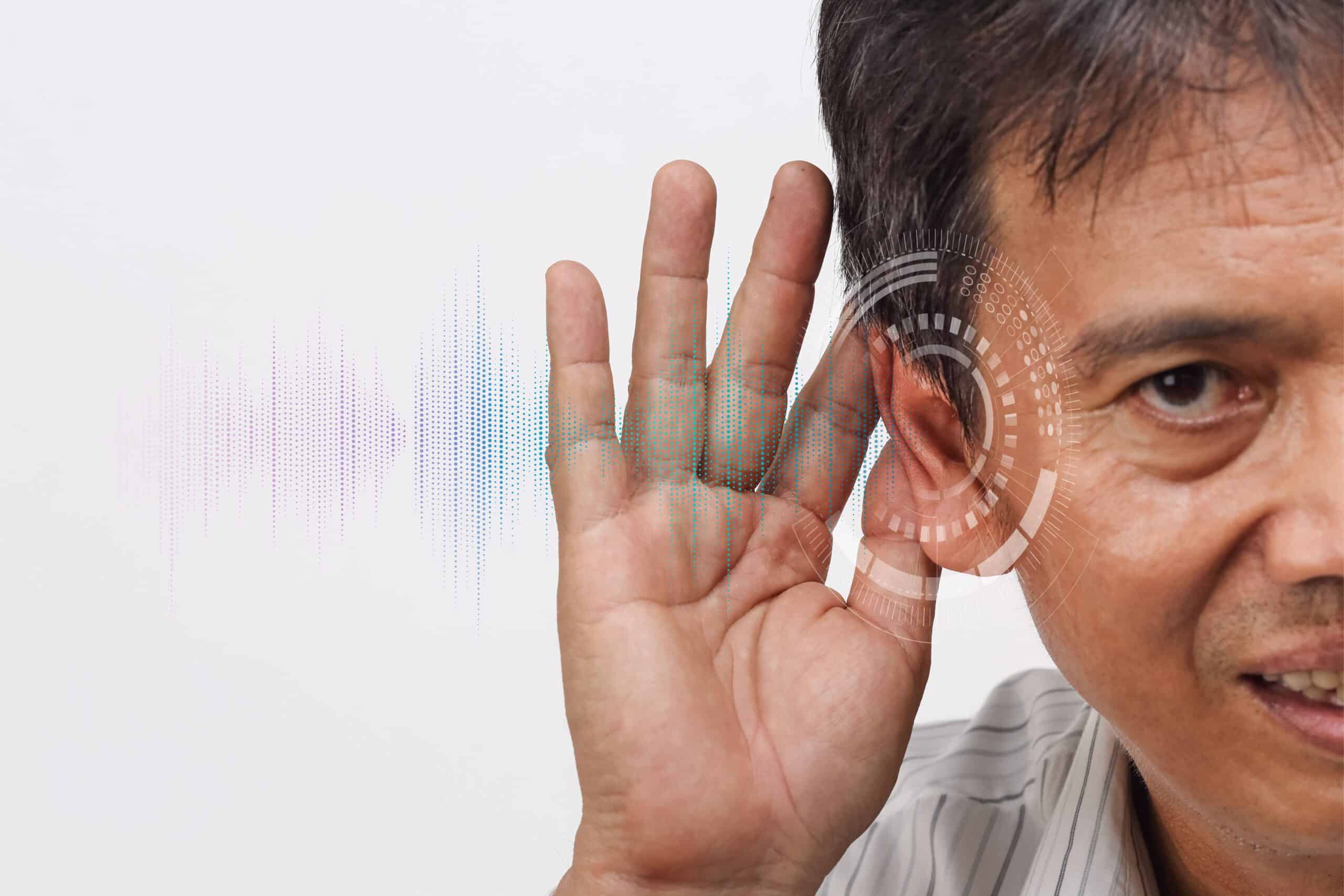Table of Contents
Have you ever wondered how good your hearing is? Maybe a friend or doctor suggested a hearing check, or you’re simply curious about what’s considered “normal.” Knowing your hearing range is key to your overall health and daily life. In this blog, we’ll explore what the normal hearing range is, how hearing is measured, and what your test results mean.
We’ll also explain what steps to take if your hearing falls outside the normal range, so you can take action early and maintain good hearing health. Let’s dive into the world of hearing and why it matters.
What Is the Normal Hearing Range?
The normal hearing range refers to how soft or loud a sound can be heard by a person with healthy ears. Sounds are measured in decibels (dB).
So, what is normal hearing?
A person with normal hearing can usually hear sounds between 0 to 20 decibels. These are soft sounds, like a ticking clock or a quiet rustle of leaves. Normal hearing also means being able to hear different pitches, from low (like thunder) to high (like a bird chirping). For example, in the figure below, normal hearing level is represented by the blue line.
How Do You Know If Your Hearing Is Normal?
Here are some signs that your hearing is within a normal range:
- You can hear soft sounds like whispers and leaves rustling
- You don’t need to raise the volume on the TV too high
- You can follow conversations even in noisy places
- You don’t ask people to repeat themselves often
- You can hear the phone ring from another room
Understanding Hearing Decibel Levels
Hearing decibel levels are used to measure how loud a sound is. The louder the sound, the higher the number. Here’s a simple breakdown:
- 0 to 20 dB – Normal hearing
- 21 to 40 dB – Mild hearing loss
- 41 to 55 dB – Moderate hearing loss
- 56 to 70 dB – Moderately severe hearing loss
- 71 to 90 dB – Severe hearing loss
- 91 dB and above – Profound hearing loss
If you need to turn up the TV a lot, ask people to repeat themselves often, or have trouble hearing in noisy places, your hearing may not be in the normal range.
What Sounds Fall Within the Normal Hearing Range?
Here are some examples of sounds and their decibel levels to give you a better idea:
Sound | Approximate dB Level |
Breathing | 10 dB |
Whisper | 20 dB |
Quiet library | 30 dB |
Normal conversation | 60 dB |
Traffic noise | 70 dB |
Lawn mower | 90 dB |
Rock concert | 110 dB |
Jet engine (close by) | 140 dB |
You should be able to hear the softer sounds (10–20 dB) if you have normal hearing.
Pure Tone Audiometry (PTA)
A hearing test helps to diagnose the degree and the type of hearing loss. It is usually done by an audiologist or hearing care professional.
One of the gold standard tests is the Pure Tone Audiometry Test, where you wear headphones or insert phones and press a button when you hear a sound. Other objective hearing tests include ABR or ASSR.
Learn more about the Pure Tone Audiometry Test.
What Is a Hearing Test Chart?
A hearing test chart, also called an audiogram, shows your hearing ability in a graph. It measures:
- Pitch (from low to high sounds)
- Volume (soft to loud sounds)
- The horizontal axis shows pitch (frequency) in Hertz (Hz)
- The vertical axis shows loudness in decibels (dB)
Common Signs of Hearing Loss
Sometimes, hearing loss can be hard to notice at first. Watch out for these early signs:
- You often say “What?” or ask people to repeat things
- You turn the TV volume louder than others prefer
- You find it hard to hear in places with background noise
- You miss phone calls or doorbells
- You feel like people are mumbling when they speak
If you notice these signs, don’t wait. A hearing test can help detect any issues early.
Types of Hearing Loss
Not all hearing loss is the same. It’s important to know the type to get the right treatment. The main types are:
Conductive Hearing Loss
This happens when sound can’t get through the outer or middle ear. It may be caused by:
- Earwax buildup
- Fluid from an ear infection
- Eardrum damage
- Bone problems in the ear
This type can often be treated with medicine or surgery.
Sensorineural Hearing Loss
This happens when the inner ear or the hearing nerve is damaged. Causes include:
- Aging
- Loud noise exposure
- Certain illnesses or medications
This type is usually permanent, but hearing aids can help.
Mixed Hearing Loss
A mix of conductive and sensorineural hearing loss. Treatment depends on what’s causing each part.
Why Knowing Your Hearing Levels Matters
Knowing your hearing levels helps you:
- Understand your hearing condition
- Choose the right hearing aids or treatment if required
- Maintain and protect your ears from further damage
- Monitor changes over time
It also helps audiologists recommend the best solutions for you.
How to Maintain Normal Hearing
Here are simple ways to keep your hearing healthy:
- Protect your ears – Use earplugs in noisy places.
- Lower the volume – Keep music and TV at safe levels.
- Take listening breaks – Give your ears rest after loud activities.
- Avoid sticking objects in your ears – This includes cotton swabs.
- Get regular check-ups – Early testing helps prevent long-term damage.
Book a full hearing check at The Hearing Centre to protect your ears.
Can You Improve Your Hearing?
If you are not in the normal range, don’t worry. There are many ways to improve your hearing, such as:
- Hearing aids – Boost sounds to make them easier to hear.
- Cochlear implants – For people with severe hearing loss.
- Medical treatment – For infections, fluid buildup, or earwax.
- Hearing therapy – To help your brain process sound better.
How Often Should You Get Your Hearing Checked?
It depends on your age and hearing health:
- Children – Newborns should get a hearing test at birth.
- Adults (18–50 years) – Every 3–5 years if no hearing problems.
- Older adults (50+) – Every 1–2 years, or more often if you notice issues.
Don’t wait for symptoms. A hearing test is quick, easy, and painless.
Understanding Hearing in Children
Children need perfect hearing to learn and grow optimally. Even mild hearing loss can affect speech and learning.
Signs of hearing loss to look out for in your child:
- Doesn’t respond to sounds
- Delays in speaking
- Doesn’t follow instructions
- Talks loudly
What Happens During a Hearing Test?
A hearing test is simple and usually includes:
- Otoscopic examination – Looking inside your ears with a light
- Hearing test – to evaluate the degree and the type of hearing loss. It may include subjective tests such as Pure Tone Audiometry (PTA) or objective tests such as Auditory brainstem response (ABR).
- Speech test – in certain cases Speech test may be recommended. Repeating words to test clarity in quiet or in the presence of noise.
- Middle ear test – Evaluate your middle ear condition with the Tympanometry test.
Conclusion
Understanding your hearing range is key to detecting problems early and protecting your long-term hearing health. Regular hearing tests help you stay informed and take action early. Ready to check your hearing? Book a professional hearing test at The Hearing Centre today.
Frequently Asked Questions
Normal hearing is between 0 to 20 dB HL.
Hearing is measured using a hearing test and shown on an audiogram.
It’s a graph that shows your hearing ability across different pitches and volumes.
Some types can be treated or improved with hearing aids or medical care.
Ageing, loud noise, infections, and earwax are common causes.
Avoid loud sounds, wear earplugs, and get regular check-ups.
It means you are missing out on soft sounds such as whispers, and you may struggle hearing conversation clearly in a noisy environment. If a child has been diagnosed with a mild hearing loss, it is important to fit them with a hearing aid to ensure they receive optimal hearing for language and speech development.
Every few years for normal hearing adults, or as soon as possible if you notice hearing changes.
dB measures loudness, while Hz measures sound pitch.
You can book one at The Hearing Centre for expert care.

Evlin is passionate about helping people with hearing loss. With years of experience in audiology, she has diagnosed and treated a wide range of hearing conditions across all age groups. She is accredited to conduct comprehensive hearing assessments and provide treatments for patients from newborns to the elderly. Committed to personalized care, she strives to empower patients to fully engage in life with better hearing.
Designation: Clinical Audiologist
Qualification: Bachelor of Health Science (Honours) (Audiology), University of Science Malaysia
Membership: .Society of Audiology Professionals in Singapore (SAPS)

